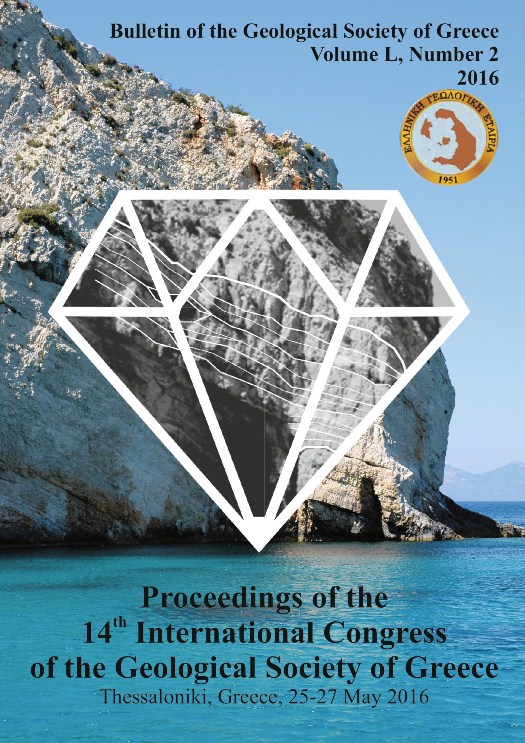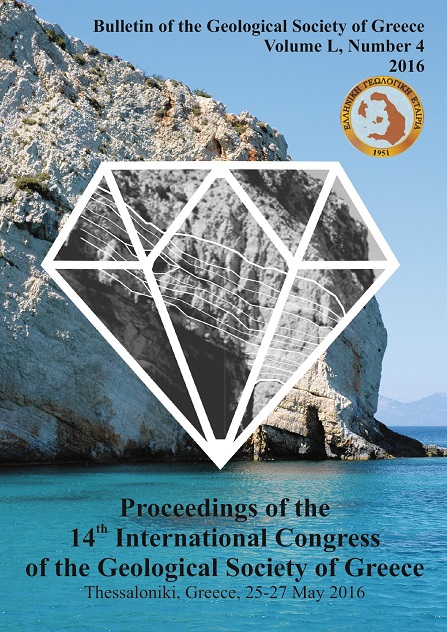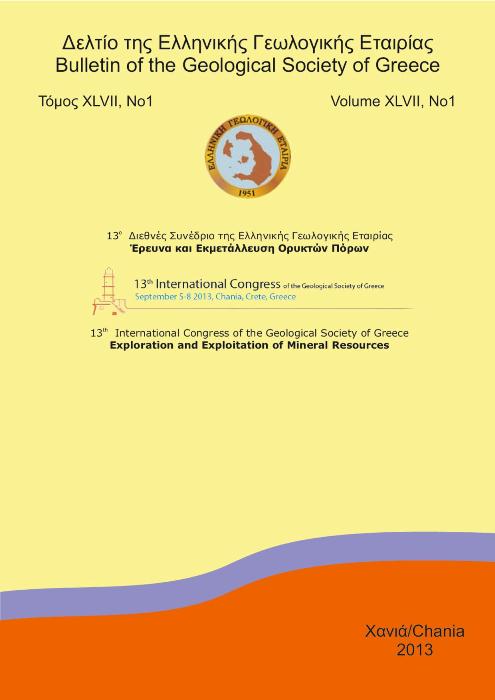HYDROCHEMICAL CHARACTERISTICS AND GEOTHERMOMETRY APPLICATIONS OF HOT GROUNDWATER IN EDIPSOS AREA, NW EUBOEA (EVIA), GREECE

Περίληψη
Στην περιοχή της Αιδηψού υπάρχει πληθώρα θερμών πηγών, σαν αποτέλεσμα των ενεργών τεκτονικών διεργασιών και της σχετικά πρόσφατης ηφαιστειότητας (ηφαιστειακό κέντρο Λιχάδων) της περιοχής. Στα πλαίσια της παρούσας μελέτης πραγματοποιήθηκε γεωχημική έρευνα των υπογείων θερμών νερών της περιοχής, με σκοπό να αξιολογηθεί το γεωθερμικό δυναμικό. Για τον σκοπό αυτό 12 δείγματα θερμών νερών συλλέχθηκαν και αναλύθηκαν με φασματοφωτομετρία για κύρια ιόντα και με AAS, ICP-OES και ICP-MS για κύρια στοιχεία και χνοστοιχεία. Από την επεξεργασία των αποτελεσμάτων διαπιστώθηκε πως ο χημισμός των υπόγειων θερμών νερών της Αιδηψού ελέγχεται από 3 παράγοντες: α) μια βαθιά μαγματική πηγή, β) την χημική σύσταση των περιβαλλόντων πετρωμάτων (π.χ. υπερβασικά πετρώματα και ασβεστόλιθοι) και γ) το θαλασσινό νερό. Η εφαρμογή χημικών γεωθερμομέτρων πρέπει να γίνει με μεγάλη προσοχή στο εν λόγω πεδίο, εξαιτίας της χημικής σύστασης των θερμών νερών και κυρίως λόγω της μεγάλης συμμετοχής θαλασσινού νερού. Το πιο κατάλληλο χημικό γεωθερμόμετρο είναι του Na-K-Ca, βάσει του οποίου υπολογίστηκε ότι η θερμοκρασία ενός πιθανού γεωθερμικού ταμιευτήρα στην περιοχή μπορεί να φτάνει έως τους 160oC. Παρότι πολλές μελέτες έχον διεξαχθεί στην περιοχή, ακόμη παραμένουν αναπάντητα ερωτήματα σχετικά με υπόγεια κυκλοφορία του θερμού νερού, στα οποία μόνο ένα πρόγραμμα βαθιών γεωθερμικών γεωτρήσεων μπορεί να δώσει απαντήσεις.
Λεπτομέρειες άρθρου
- Πώς να δημιουργήσετε Αναφορές
-
Kanellopoulos, C., Christopoulou, M., Xenakis, M., & Vakalopoulos, P. (2016). HYDROCHEMICAL CHARACTERISTICS AND GEOTHERMOMETRY APPLICATIONS OF HOT GROUNDWATER IN EDIPSOS AREA, NW EUBOEA (EVIA), GREECE. Δελτίο της Ελληνικής Γεωλογικής Εταιρείας, 50(2), 720–729. https://doi.org/10.12681/bgsg.11778
- Ενότητα
- Engineering Geology, Hydrogeology, Urban Geology

Αυτή η εργασία είναι αδειοδοτημένη υπό το CC Αναφορά Δημιουργού – Μη Εμπορική Χρήση 4.0.
Οι συγγραφείς θα πρέπει να είναι σύμφωνοι με τα παρακάτω: Οι συγγραφείς των άρθρων που δημοσιεύονται στο περιοδικό διατηρούν τα δικαιώματα πνευματικής ιδιοκτησίας επί των άρθρων τους, δίνοντας στο περιοδικό το δικαίωμα της πρώτης δημοσίευσης. Άρθρα που δημοσιεύονται στο περιοδικό διατίθενται με άδεια Creative Commons 4.0 Non Commercial και σύμφωνα με την οποία μπορούν να χρησιμοποιούνται ελεύθερα, με αναφορά στο/στη συγγραφέα και στην πρώτη δημοσίευση για μη κερδοσκοπικούς σκοπούς. Οι συγγραφείς μπορούν να: Μοιραστούν — αντιγράψουν και αναδιανέμουν το υλικό με κάθε μέσο και τρόπο, Προσαρμόσουν — αναμείξουν, τροποποιήσουν και δημιουργήσουν πάνω στο υλικό.





